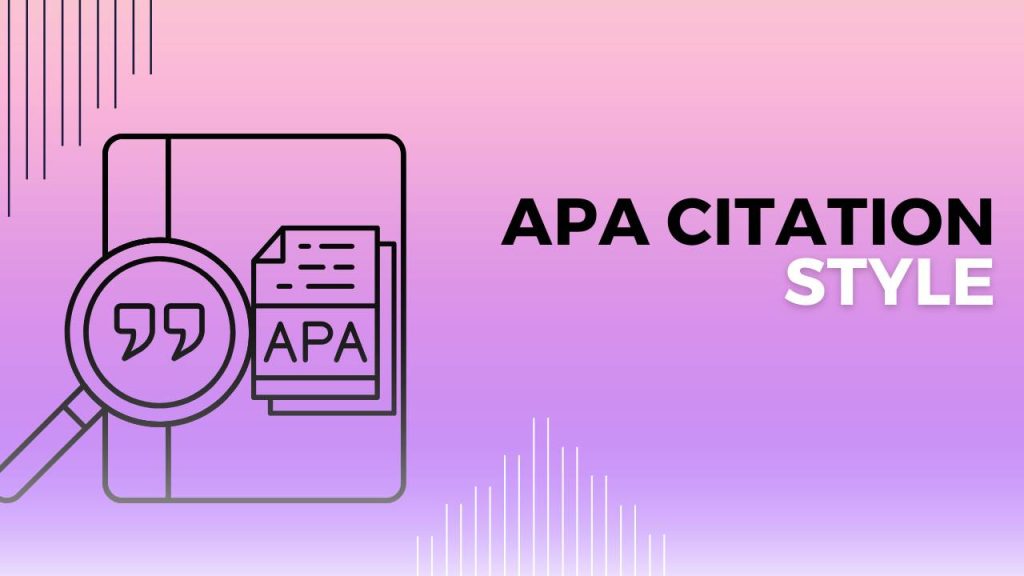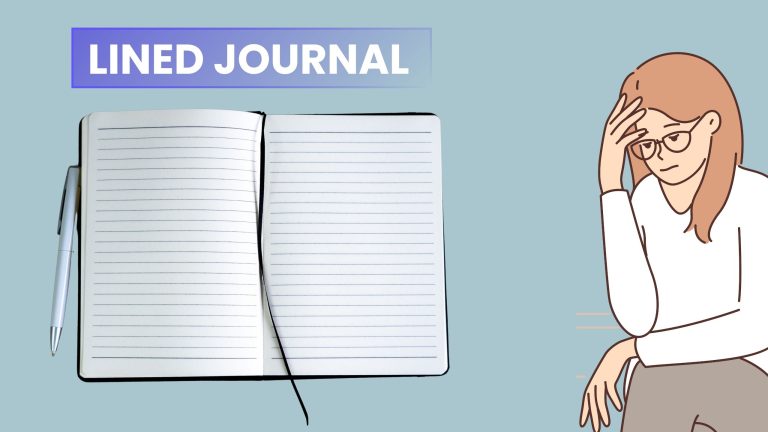How to Use APA Citation Style Step-by-Step: Format, Rules & Common Mistakes

Mastering APA Citation Style is one of the most important skills every student, researcher, or academic writer should have. Whether you’re writing a psychology research paper, a business report, or a literature review, using the correct citation format builds your credibility, enhances the professionalism of your work, and ensures that you avoid plagiarism.
Find details on how to use APA Citation Style step-by-step, covering everything from the basics of formatting and citation examples to the most common mistakes writers make — and how to fix them.
What is APA Citation Style?
APA Citation Style, developed by the American Psychological Association, is one of the most widely used formats for academic and professional writing. It provides a uniform structure for citing sources, formatting papers, and organizing references.
Its purpose is to make scholarly communication consistent, clear, and credible. Every academic field relies on a citation style to help readers easily trace where information comes from — APA is the standard for fields like psychology, sociology, education, and business.
APA’s system focuses on the author-date format, making it easy for readers to identify when and by whom a source was written. This encourages accountability and transparency, which are essential in academic research.
Why APA Format is Important
Using APA format isn’t just about following rules — it’s about maintaining academic integrity. When you cite sources properly, you:
- Give Credit to Original Authors: Avoiding plagiarism and respecting intellectual property.
- Build Credibility: Showing that your arguments are backed by trustworthy research.
- Maintain Consistency: Ensuring your paper looks professional and follows universal guidelines.
- Enhance Readability: Making it easier for readers to understand and locate sources.
In essence, APA format elevates the quality and trustworthiness of your writing, which is crucial in both academic and professional environments.
Who Uses APA Style?
APA format is most commonly used in:
- Psychology and Behavioral Sciences
- Education and Pedagogy
- Sociology and Social Work
- Business, Marketing, and Economics
- Nursing and Health Sciences
It’s also used in various journals, research papers, and theses worldwide. Whether you’re writing a lab report, a literature review, or a professional article, APA provides a consistent framework that ensures clarity and precision.
Understanding the Basics of APA Format
Overview of the Latest APA Edition
The most current guidelines come from the APA 7th Edition, released in 2019. It modernized the format to fit digital-age resources and simplify student writing. Some of the major updates include:
- Listing up to 20 authors before using “et al.” in the reference list.
- Shorter and cleaner DOI and URL formats (no “Retrieved from”).
- Clearer differentiation between student papers and professional manuscripts.
- Inclusive language guidelines to promote bias-free writing.
- Simplified heading styles and flexible font choices.
These updates make APA format easier, more inclusive, and adaptable to modern research needs.
General APA Formatting Rules
When formatting your paper according to APA guidelines, make sure you follow these universal standards:
- Font: Use a readable font such as Times New Roman (12 pt), Arial (11 pt), or Calibri (11 pt).
- Spacing: Double-space throughout, including reference pages and block quotes.
- Margins: Use 1-inch margins on all sides for a neat presentation.
- Page Header: Add page numbers in the top-right corner.
- Alignment: Left-align text with a ragged right margin.
- Structure: Include key sections — Title Page, Abstract, Main Body, and References.
Consistency in these details makes your paper visually professional and reader-friendly, which is a must in academic writing.
How to Do APA Citations Step-by-Step
Creating APA citations might seem complicated at first, but once you follow these structured steps, it becomes second nature:
Step 1: Identify the Source Type
Recognize whether your source is a book, website, journal article, report, or multimedia. APA formatting differs based on the source category.
Step 2: Collect Essential Details
Gather all relevant publication information, including:
- Author(s)
- Year of publication
- Title of the work
- Publisher or organization
- DOI or URL (for online sources)
Step 3: Format the In-Text Citation
APA in-text citations use the author-date format, allowing readers to find the corresponding reference easily.
Step 4: Build the Reference Entry
Each in-text citation should have a complete entry on the reference list, with detailed publication data formatted properly.
Step 5: Review and Cross-Check
Finally, verify that your in-text citations and reference list entries match perfectly and follow APA’s punctuation, capitalization, and italicization rules.
APA In-Text Citation Rules
In-text citations appear within your writing and direct readers to full references at the end. Follow these essential rules:
- Use the Author-Date Format: Mention the author’s surname and publication year.
- Cite All Sources Used: Whether quoting directly or paraphrasing, always cite the source.
- Cite Multiple Authors Properly: Use commas and ampersands correctly for two or more authors.
- No Author? Use the title of the source in place of the author’s name.
- Direct Quotes: Include page numbers to guide readers to the exact part of the source.
Strong citation practices ensure your writing is ethically responsible and academically credible.
APA Reference Page Format
The reference page serves as the final section of your paper, providing complete information for each source cited. Follow these guidelines:
- Title the page “References”, centered and bolded.
- Double-space all entries.
- Use hanging indent (first line left-aligned, subsequent lines indented).
- Arrange entries alphabetically by author surname.
- Follow capitalization and punctuation rules carefully.
- Ensure every in-text citation appears in the reference list.
A properly formatted reference page reflects attention to detail and enhances your paper’s professional quality.
APA Citation for Common Source Types
APA style accommodates various types of sources. Understanding the formatting for each ensures accuracy. Common types include:
- Books and eBooks: Used frequently in research and academic writing.
- Journal Articles: The foundation of most scholarly papers.
- Websites and Online Articles: Ideal for current data, trends, and digital resources.
- Government Reports and PDFs: Often provide official data and credible information.
- Multimedia Sources: Includes videos, podcasts, and online media.
When citing, always make sure to include as much identifying information as possible to help readers trace your sources easily.
Common APA Citation Mistakes and How to Avoid Them
Even experienced writers make citation errors. Here are some of the most frequent mistakes:
- Using incorrect author order or missing authors.
- Forgetting to italicize titles or journal names.
- Omitting publication dates or URLs.
- Mixing APA with MLA or Chicago formatting.
- Not double-checking punctuation and capitalization.
Tips to Avoid These Errors:
- Always cross-check your references with official APA guidelines.
- Use citation generators with caution — never rely solely on them.
- Proofread your reference list multiple times.
- Keep your citation formatting consistent across the entire paper.
Avoiding these mistakes not only boosts your credibility but also helps you maintain a professional academic tone.
Helpful APA Formatting Tools and Resources
Thanks to technology, formatting your citations no longer has to be time-consuming. These resources make it simpler:
- APA Citation Generators: Automatically format sources with accuracy.
- Word Processors: Microsoft Word and Google Docs include built-in APA templates.
- Writing Assistants: Grammarly and QuillBot can help check APA compliance.
- Official APA Resources: Use the APA Publication Manual (7th Edition) or visit apastyle.apa.org for verified guidance.
These tools save time, reduce errors, and help you focus more on the content of your paper rather than technical formatting.
Quick APA Checklist Before You Submit
Before turning in your paper, use this checklist to ensure you haven’t missed anything:
- Title page meets APA 7th Edition requirements.
- Headings are properly formatted and consistent.
- All in-text citations match corresponding reference entries.
- Reference list is double-spaced and alphabetized.
- Proper margins, fonts, and spacing are used.
- URLs, DOIs, and publication details are accurate.
- Proofread for grammar, clarity, and consistency.
Completing this checklist before submission ensures your work reflects professionalism and attention to detail.
Consistency and correctness in APA formatting not only improve your grades but also strengthen your overall writing discipline — a valuable skill in both academic and professional careers. The more you practice, the easier it becomes to cite sources accurately and confidently.
FAQs
1. What is APA Citation Style and why is it important?
The APA Citation Style, developed by the American Psychological Association, is a standardized method for citing sources and formatting academic papers. It ensures clarity, consistency, and credibility in scholarly writing.
Using APA helps avoid plagiarism, allows readers to trace original sources easily, and maintains a professional structure in research papers and reports.
2. What is the latest version of APA format currently in use?
The most recent version is the APA 7th Edition, released in October 2019. It replaced the 6th edition with several updates such as simpler citation rules, inclusive language guidelines, and more flexible formatting options.
The 7th edition is now the official standard used in universities, journals, and professional publications worldwide.
3. Which fields or disciplines commonly use APA format?
APA format is most widely used in disciplines related to the social and behavioral sciences, including:
- Psychology and Sociology
- Education and Pedagogy
- Nursing and Health Sciences
- Business and Economics
- Political Science and Communication Studies
Its structured author-date system makes it ideal for research that frequently references current data and empirical studies.
4. What are the key components of an APA-formatted paper?
An APA paper typically includes the following sections:
- Title Page – includes title, author name, affiliation, and date.
- Abstract – a brief summary of the paper’s purpose and findings.
- Main Body – detailed discussion, analysis, and citations.
- References Page – a complete list of all sources cited in the text.
Each section must follow APA formatting guidelines for spacing, fonts, and structure to ensure consistency throughout the paper.
5. How do APA in-text citations work?
APA uses an author-date citation system, meaning each source is cited in-text with the author’s last name and publication year.
For example, if you refer to a source by Smith published in 2020, you cite it as (Smith, 2020). This citation then links to a full reference on the reference page.
This system allows readers to identify and verify sources quickly without interrupting the flow of reading.
6. What are the most common mistakes made in APA formatting?
Some frequent APA citation and formatting mistakes include:
- Incorrect author order or missing publication dates
- Forgetting italics for book or journal titles
- Not including DOIs or URLs for online sources
- Mixing different citation styles (MLA or Chicago)
- Improper capitalization in titles
To avoid errors, always refer to the APA Manual (7th Edition) or use reputable citation tools and proofread carefully.
7. What is the difference between APA and MLA citation styles?
The main differences between APA and MLA lie in structure, citation format, and field of use:
- APA uses the author-date citation style and is primarily used in social sciences and business.
- MLA uses the author-page system and is mostly used in humanities and literature studies.
APA emphasizes dates to highlight the timeliness of research, while MLA focuses on author and page to emphasize textual analysis.
8. How do I format multiple authors in APA citations?
In APA 7th Edition, the rule for listing authors is as follows:
- For two authors, include both names joined by an ampersand (&).
- For three or more authors, list only the first author’s name followed by et al. in in-text citations.
On the reference page, you can list up to 20 authors before using an ellipsis (…). This change helps give proper credit to all contributors in large research studies.
9. Are online citation generators reliable for APA references?
Citation generators can be helpful, but they’re not always 100% accurate. Many tools may omit or misformat details like capitalization, italics, or punctuation.
It’s best to use them for assistance, then cross-check each generated citation with official APA guidelines or trusted sources such as apastyle.apa.org before final submission.
10. How can I make sure my APA citations are accurate and consistent?
To ensure accuracy and consistency:
- Follow the official APA 7th Edition Manual for detailed rules.
- Use citation management tools like Zotero, Mendeley, or EndNote.
- Proofread your reference list and in-text citations carefully.
- Keep a running bibliography as you write, so you don’t miss any sources.
Regular practice and double-checking will help you master APA formatting efficiently and confidently.
Country: USA, UK, China, Singapore, UAE, France, Germany, Australia.
City: London, Singapore, Paris, Dubai, Rome, Sydney, Kuala Lumpur, Toronto, Berlin, Bangkok, Valencia, Washington.
Topic: Engineering and Technology, Health and Medicine, Business and Economics, Education, Physical and Life Sciences, Social Sciences & Humanities, Interdisciplinary, Other.






